
Elegir un analizador de metales preciosos es importante para resultados precisos. Ayuda a verificar metales como oro, plata, o platino. El analizador correcto ahorra tiempo, dinero, y proporciona resultados confiables. Piense en la portabilidad, facilidad de uso, y su propósito. Por ejemplo, Los joyeros pueden necesitar un pequeño, Analizador de metales preciosos portátiles. Los usuarios industriales pueden querer uno con características avanzadas. Diferentes analizadores trabajan para diferentes tareas. Elegir el correcto hace que las pruebas sean fáciles y precisas.
Conclusiones clave
Elija un probador de metal precioso que se adapte a sus necesidades. Piense en lo portátil que es, Qué fácil es usar, y que metales quieres probar.
Evaluadores electrónicos y Analizador XRFs son seguros de usar. Proban joyas sin causar ningún daño y dan rápido, Resultados precisos.
Mantenga a su probador calibrado regularmente. Esto ayuda a mantenerse preciso y confiable para las pruebas.
Los kits de prueba de ácido son baratos pero necesitan un uso cuidadoso. Siga siempre las reglas de seguridad para evitar accidentes con los productos químicos..
Compre su probador de una marca de confianza. Las buenas marcas son más precisas, durar más, y tener un mejor servicio al cliente.
Tipos de analizadores de metales preciosos
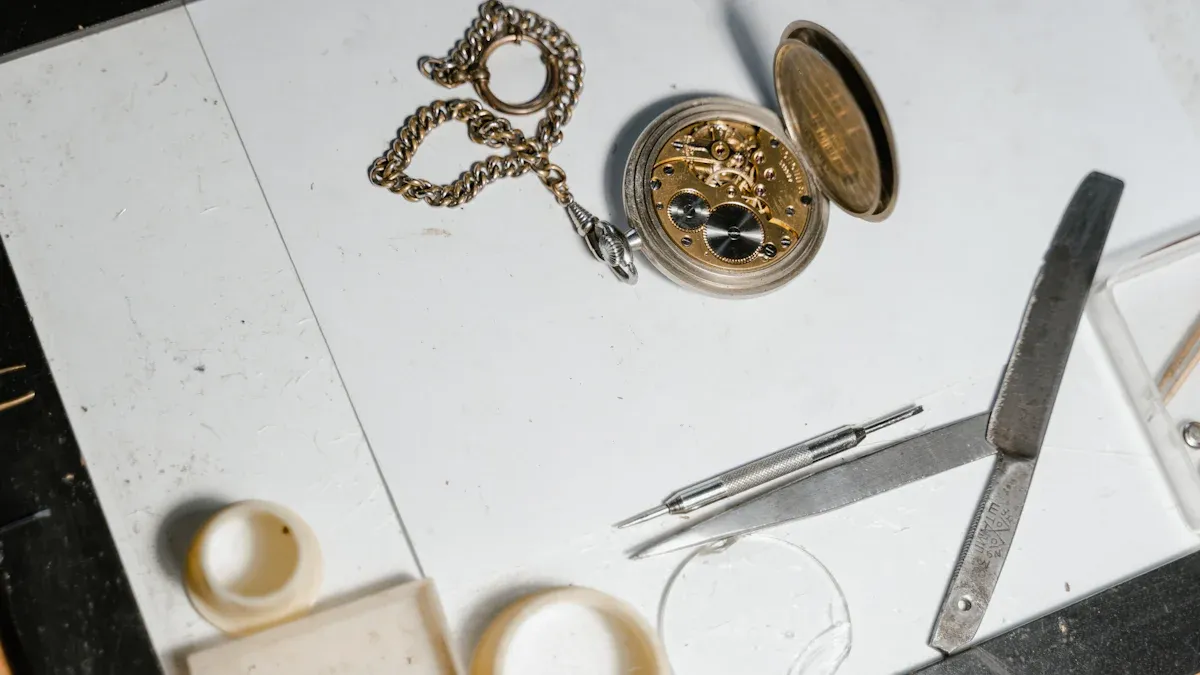
Pruebas oro, plata, platino, or paladio se puede hacer con diferentes herramientas. Cada tipo de analizador tiene sus propios beneficios basados en sus necesidades. Aquí hay tres opciones comunes: kits de prueba de ácido, evaluadores electrónicos, y prueba de densidadinglesa.
Kits de prueba de ácido
La prueba de ácido es una antigua forma de revisar los metales preciosos. Utiliza ácidos para probar la pureza de oro, plata, y platino. Usted rasca el metal en una piedra de prueba y agregas ácido. La reacción muestra si el metal es real y su nivel de Karat.
Estos kits son baratos y fáciles de usar. Funcionan bien para pequeñas pruebas como verificar joyas o monedas. Pero tenga cuidado: los ácidos pueden ser peligrosos si no se manejan adecuadamente. Además, Pierdes una pequeña pieza del metal durante las pruebas, que puede no ser ideal para artículos valiosos.
Propina: Use guantes y trabaje en un espacio ventilado cuando use kits ácidos. Los pasos de seguridad lo ayudan a mantenerse seguro y obtener resultados precisos.
Evaluadores electrónicos
Los probadores electrónicos son una forma moderna de probar metales. Miden lo bien oro, plata, y platino realizar electricidad. Estos probadores son pequeños, Fácil de transportar, y fácil de usar. Los joyeros y las tiendas de empeño a menudo los prefieren.
Por ejemplo, Probador de oros Muestre rápidamente el nivel de Karat sin dañar el artículo. Ellos también prueban plata y platino sin peligro. A diferencia de los kits de ácido, No usan productos químicos, haciéndolos más seguros. Sin embargo, podrían no probar paladio o metales raros con tanta precisión.
Nota: Calibrar a los probadores electrónicos regularmente para mantener los resultados confiables.
Prueba de densidad
Prueba de densidad verifica metales comparando peso con el volumen. Cada metal, como oro, plata, platino, y paladio, tiene una densidad única. Este método ayuda a identificar los metales con precisión.
Necesita una escala y agua para pruebas de densidad. Primero, Pesar el metal. Entonces, Sumérgalo en agua y mida el volumen desplazado. Use estos números para encontrar la densidad y coincidir con las listas de referencia.
Este método funciona mejor para artículos grandes como barras de oro o bloques de plata. No necesita productos químicos o electricidad, Entonces es simple. Pero es más difícil de usar para piezas pequeñas o detalladas, ya que medir el volumen puede ser complicado.
Sabías? Las pruebas de densidad no dañan el metal, manteniéndolo intacto.
Métodos de ensayo de fuego
El ensayo de fuego es una forma muy antigua y confiable de verificar cuán puros son los metales preciosos. Este método derrite el metal a fuego alto para eliminar cualquier cosa que no sea pura. Funciona bien para probar oro, plata, y platino con gran precisión.
Cómo funciona:
Preparación: Coloque el metal en un recipiente a prueba de calor con un material como bórax. Esto ayuda a deshacerse de las impurezas.
Calefacción: Calienta el recipiente en un horno hasta que el metal se derrita. Las impurezas flotan a la parte superior o se mezclan con el bórax.
Separación: Eliminar las impurezas, dejando solo el metal puro atrás.
Peso: Pesar el metal puro para descubrir su pureza.
Este método es muy preciso pero necesita herramientas y habilidades especiales.. Se usa principalmente en laboratorios o industrias donde los resultados exactos son muy importantes.. No es excelente para el uso diario porque es complicado y lleva tiempo.
Nota: El ensayo de fuego destruye la muestra, Entonces no puedes recuperarlo en su forma original. Use este método solo cuando la precisión es más importante que mantener el elemento.
XRF Analizador de metales preciosos
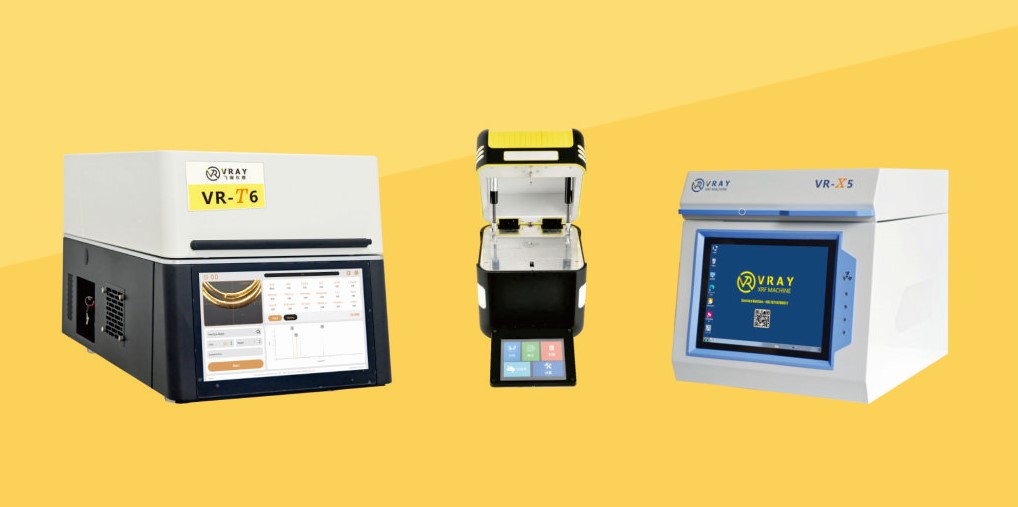
Un analizador de metales preciosos XRF utiliza radiografías para averiguar qué metales hay en un elemento y cuán puros son. Esta herramienta de alta tecnología es rápida, no daña el artículo, y es muy preciso. Es popular entre los joyeros, Fabricantes, e inversores.
Cómo funciona:
El analizador envía rayos X a la superficie del metal.
El metal absorbe las radiografías y emite nuevos rayos X.
El analizador lee estas nuevas radiografías para descubrir el tipo y la pureza del metal.
Beneficios de los analizadores XRF:
Velocidad: Los resultados vienen en solo unos segundos.
No destructivo: Prueba de metales sin dañarlos.
Versatilidad: Funciona en muchos metales como oro, plata, platino, y paladio.
Al elegir un analizador XRF, Piensa en cómo portátil, preciso, y fácil de usar es. Algunos son de mano, haciéndolos excelentes para pruebas rápidas. Otros están hechos para laboratorios y tienen características avanzadas para controles detallados.
Propina: Calibre su analizador XRF a menudo para mantenerlo preciso. Sigue las instrucciones del fabricante de cuidado.
La fluorescencia de rayos X es perfecta para las personas que necesitan resultados rápidos y confiables sin dañar el artículo. Ya sea que seas un joyero, inversor, o trabajar en una industria, Esta herramienta facilita la prueba de metales.
Características clave para evaluar

Al elegir un analizador de metales preciosos, Conocer sus características te ayuda a elegir sabiamente. A continuación hay tres cosas importantes en las que pensar.
Exactitud y precisión
La precisión muestra qué tan cerca están los resultados de las pruebas para el maquillaje de metal real. Precisión significa obtener los mismos resultados en pruebas repetidas. Ambos son clave para mediciones confiables, como verificar la pureza del oro o identificar metales para el trabajo de la industria.
Por ejemplo, Herramientas avanzadas como los analizadores XRF ofrecen precisión de alto nivel. Pueden encontrar incluso pequeñas cantidades de elementos en metales como el oro, plata, y platino. Aquí hay una tabla que compara los niveles de precisión de dos analizadores populares.:
Elemento | Prueba 1 | Prueba 2 | Prueba 3 | Prueba 4 | Prueba 5 | Cuenta con GX Averrage (%) | Fluxana 0732-16 Valor certificado (%) |
|---|---|---|---|---|---|---|---|
Oro (UA) | 33.50 | 33.40 | 33.39 | 33.38 | 33.42 | 33.42 | 33.33 |
Plata (Ag) | 58.30 | 58.41 | 58.36 | 58.29 | 58.41 | 58.36 | 58.61 |
Cobre (Cu) | 8.2 | 8.2 | 8.25 | 8.32 | 8.17 | 8.23 | 8.06 |
Esta tabla muestra cuán precisos son los analizadores modernos. Son excelentes para las tareas que necesitan resultados exactos, Como probar el oro o verificar su pureza. Elegir un analizador con precisión probada es muy importante.
Propina: Calibre regularmente su analizador para mantenerlo preciso y consistente.
Facilidad de uso e interfaz de usuario
Un analizador fácil de usar ahorra tiempo y evita errores. Busque dispositivos con controles simples, pantallas claras, y configuración fácil. Por ejemplo, Los analizadores VRAY XRF a menudo tienen pantallas táctiles y opciones preestablecidas, haciéndolos amigables para principiantes.
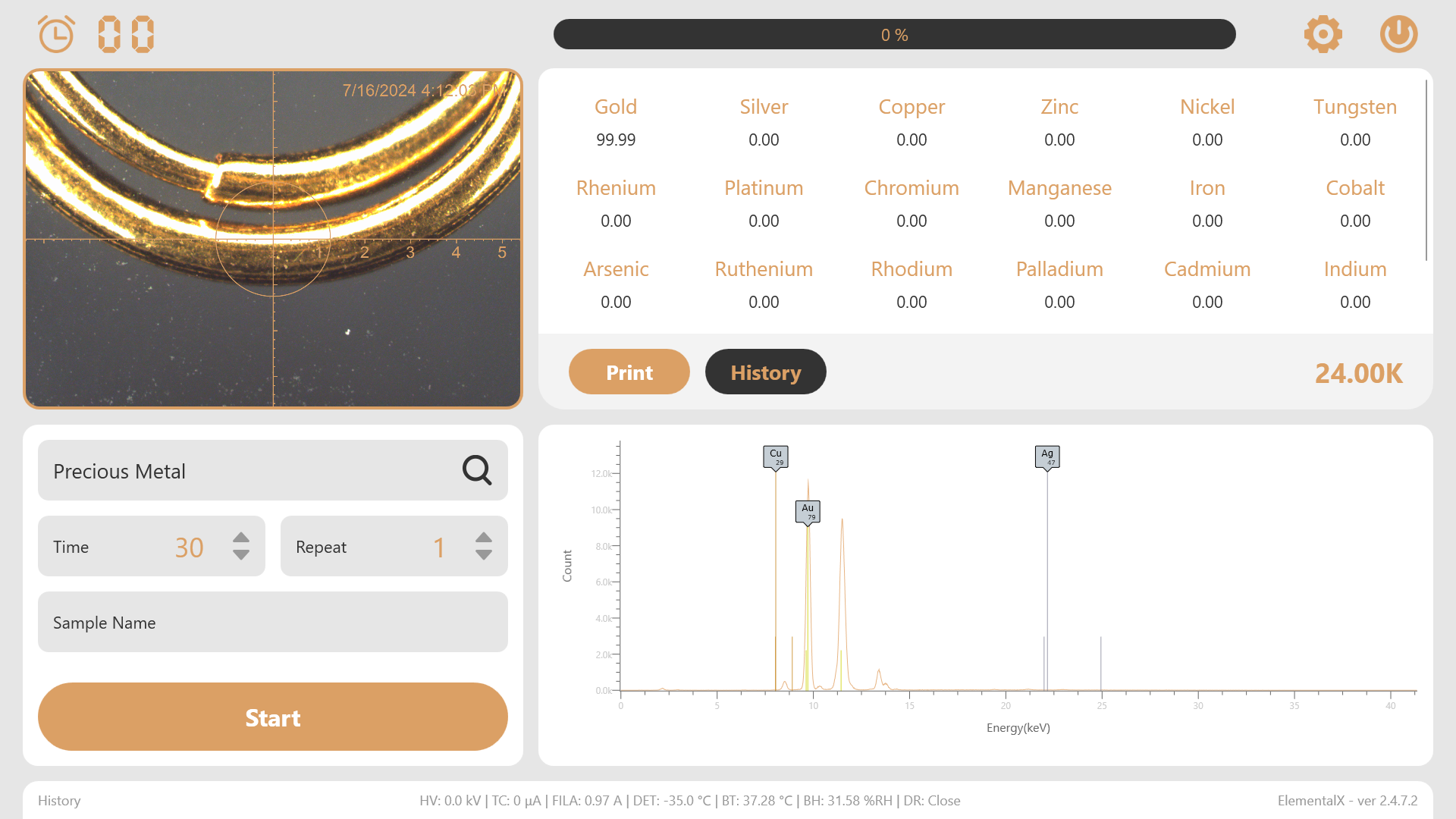
Piense en cómo el analizador se adapta a su trabajo. Si prueba metales en el sitio, un peso ligero, El dispositivo portátil es útil. Si trabajas en un laboratorio, Un modelo detallado con informes avanzados podría ser mejor.
Durabilidad y garantía
La durabilidad es importante, Especialmente para entornos de trabajo difíciles. Elija analizadores hechos con materiales fuertes como plástico o metal reforzado. Estos duran más y manejan el uso frecuente.
Una buena garantía muestra que el fabricante confía en su producto. La mayoría de los analizadores de calidad tienen garantías durante al menos un año. Esto protege su inversión y da tranquilidad.
Gritar: Antes de comprar, Investigue proveedores de confianza. A menudo ofrecen mejores garantías y apoyo..
Durabilidad y trabajo de garantía juntos. Se aseguran de que su analizador sea útil durante mucho tiempo.
Hacer coincidir el analizador con sus necesidades
Cómo probar metales preciosos para joyas
Prueba de joyería necesita cuidado y precisión. Debes verificar la pureza del metal sin dañarlo. Herramientas portátiles como evaluadores electrónicos o analizadores XRF funcionan bien. Dan resultados rápidos y precisos y son fáciles de usar. Por ejemplo, Un analizador XRF muestra el nivel de Karat de oro en segundos. No daña las joyas, haciéndolo ideal para joyeros.
Los kits de prueba de ácido son otra opción para probar el oro. Estos kits son baratos y buenos para pequeñas pruebas. Pero usan productos químicos, Así que manejalos con cuidado. Siga las reglas de seguridad para evitar accidentes y obtener los resultados correctos.
Propina: Utilice herramientas no dañinas como analizadores XRF para joyas valiosas.
Análisis de metales preciosos para aplicaciones industriales
Las industrias necesitan pruebas exactas para cumplir con reglas estrictas. Herramientas como analizadores XRF o métodos de ensayo de incendio a menudo se usan. Los analizadores XRF prueban los metales como el oro, plata, y platino rápidamente. No dañan el material, lo cual es importante para las fábricas.
Los métodos de ensayo de fuego tardan más pero son muy precisos. Los laboratorios los usan para encontrar la composición exacta de los metales. Este método funciona bien para industrias como la electrónica o la aeroespacia.
Nota: Calibrar analizadores a menudo para mantener los resultados correctos en el trabajo industrial.
Métodos de prueba para la inversión personal o la recolección
Los inversores y los coleccionistas deben probar metales para verificar su calidad. Los analizadores XRF son excelentes para esto porque son rápidos y no dañan los elementos. Esto es útil para piezas raras o coleccionables..
La prueba de ácido es otra buena opción para verificar el oro y la plata.. Es fácil de usar y popular entre los expertos y los aficionados.. Pero debe seguir los pasos de seguridad para obtener buenos resultados.
El oro y la plata son inversiones inteligentes que protegen contra la inflación. También crecen en valor con el tiempo. Las pruebas aseguran que sus metales sean reales y mantenga su valor alto.
Sabías? Agregar metales preciosos a sus inversiones puede Aumentar la estabilidad y el crecimiento.
Resultados precisos para tiendas de empeño o negocios de reventa
Las tiendas de peones y las tiendas de reventa necesitan herramientas precisas para probar metales. Elegir el analizador adecuado lo ayuda a tomar opciones inteligentes de compra y venta. Analizadores avanzados, Al igual que el VR-T6, VR-M5, dar resultados exactos mientras mantiene los elementos sin daños.
Los analizadores modernos no dañan los elementos que prueban. Esto es importante para joyas valiosas o coleccionables raros.. Por ejemplo, Los analizadores XRF usan rayos X para verificar la pureza y el tipo de metales. El proceso es rápido, seguro, y confiable, Perfecto para tiendas ocupadas.
Aquí hay algunas razones para usar analizadores avanzados en su tienda:
Evaluaciones precisas: Revise rápidamente el oro, plata, y la pureza de otros metales. Esto ayuda a evitar pagar demasiado o subvaluar los artículos.
Ensayos no destructivos: Probar elementos sin dañarlos, Manteniendo su valor intacto.
Confianza del cliente: Probar la autenticidad metálica genera confianza con los clientes. También protege su tienda de artículos falsos.
Eficiencia: Obtenga resultados en segundos, ahorrar tiempo durante las ventas o compras.
El uso de un analizador confiable mejora el trabajo y la reputación de su tienda. Los clientes valoran la honestidad y la precisión, que los mantiene regresando. Para garantizar resultados constantes, Calibre su analizador con frecuencia y siga las instrucciones del fabricante.
Propina: Elija una marca de confianza como la Verdadero para precisión y confiabilidad duradera. Esto le ayuda a mantenerse a la vanguardia en el negocio de reventa.
Recomendaciones y consejos
Marcas y modelos de confianza para análisis de metales preciosos
Elegir una marca de confianza le brinda un analizador confiable. Asegura resultados precisos para probar metales. Algunas marcas se centran en herramientas para pruebas de metales preciosos. Ofrecen modelos para joyas, metales industriales, o coleccionables.
Aquí hay algunas marcas de confianza:
Instrumento VRAY : Especializarse en fabricación y venta de detectores de metales preciosos XRF, que son fáciles de operar y proporcionan resultados precisos. Los detectores de metales Vray Precious son ampliamente elogiados en la industria de la joyería.
Thermo Fisher Scientific: Hace que los analizadores XRF avanzados. Tienen modelos portátiles y de laboratorio para pruebas precisas..
Bruquero: Proporciona analizadores XRF precisos con diseños fáciles de usar. Los joyeros e industrias a menudo los usan.
Metalítico de sigma: Crea evaluadores electrónicos para rápido, controles de oro y plata seguros.
Niton XL2: Un pequeño analizador XRF para FAST, pruebas precisas. Ideal para tiendas de empeño y tiendas de reventa.
Elija un modelo basado en sus necesidades. Los analizadores portátiles son buenos para el trabajo de campo. Los de nivel de laboratorio dan resultados detallados para las industrias.
Consejos para el mantenimiento y la calibración adecuados
Cuidar de su analizador lo mantiene funcionando bien. La calibración también es clave para resultados precisos, Especialmente con metales preciosos. Siga estos consejos para mantener su dispositivo:
Consejos de mantenimiento:
Limpie el dispositivo a menudo para evitar problemas de polvo.
Actualizar el software para mantenerlo funcionando sin problemas.
Registro de tareas de mantenimiento para rastrear su condición.
Mejores prácticas de calibración:
Use las instrucciones del fabricante para cumplir con los estándares.
Trabajar con expertos certificados para calibración confiable.
Mantenga un registro de calibraciones para futuras controles.
Revise el dispositivo para el desgaste o la deriva regularmente.
Recalibrar después de reparaciones o impactos para garantizar la precisión.
La calibración diaria es crucial para los analizadores XRF. Mantiene los resultados consistentes, Especialmente con nuevos metales.
Nota: Omitir el mantenimiento o la calibración puede causar lecturas incorrectas y malos resultados.
Errores comunes a evitar al probar metales preciosos
Prueba de metales necesita atención y precisión. Evitar errores lo ayuda a obtener los resultados correctos y ahorra dinero.
Aquí hay una mesa de errores comunes y sus efectos:
Errores comunes en la prueba de metales preciosos | Descripción |
|---|---|
Preparación de datos incorrecta | Saltar este paso causa malos resultados. |
Manejo de datos censurados | Eliminar datos censurados crea resultados sesgados. |
Uso de pruebas estadísticas | Ignorar pruebas como ANOVA afecta la precisión. |
Para evitar estos errores:
Prepare sus datos correctamente antes de probar.
Manejar los datos censurados cuidadosamente para evitar el sesgo.
Use pruebas estadísticas para verificar las diferencias de metales.
Gritar: Siga siempre los pasos de prueba y verifique su configuración para evitar errores.
Preguntas más frecuentes
¿Cuál es el método más preciso para probar metales preciosos??
El ensayo de fuego es la forma más precisa de verificar la pureza. Derrite el metal para eliminar las impurezas. Analizadores XRF, sin embargo, son más rápidos y no dañen el artículo. Son excelentes para las pruebas diarias.
Propina: Use el ensayo de incendio para obtener resultados exactos de laboratorio y XRF para verificaciones rápidas.
¿Puedo probar metales preciosos sin dañarlos??
Sí, Puede probar metales sin daños utilizando analizadores XRF o pruebas de densidad. Estos métodos mantienen el elemento en su forma original mientras dan resultados precisos.
Nota: Omita las pruebas de ácido si desea evitar dañar el artículo.
¿Con qué frecuencia debo calibrar mi analizador??
Calibre su analizador todos los días o antes de probar nuevos metales. La calibración regular mantiene los resultados precisos y confiables, Especialmente para los analizadores XRF.
Gritar: Sigue siempre las instrucciones del fabricante sobre la frecuencia de calibrar.
¿Son seguros los kits de prueba ácidos de usar??
Los kits de prueba de ácido son seguros si los usa con cuidado. Usar guantes, trabajar en un espacio de aire fresco, y manejar ácidos con cuidado de mantenerse a salvo.
Alerta: Almacenar ácidos en un lugar seguro para evitar derrames o accidentes.
¿Qué analizador es mejor para las pruebas de joyería??
Analizador XRF portátilS son los mejores para probar joyas. Ellos dan rápido, resultados precisos y no dañe el elemento. Los evaluadores electrónicos también son buenos para controles rápidos.
Propina: Elija herramientas que no dañen las joyas valiosas durante las pruebas.
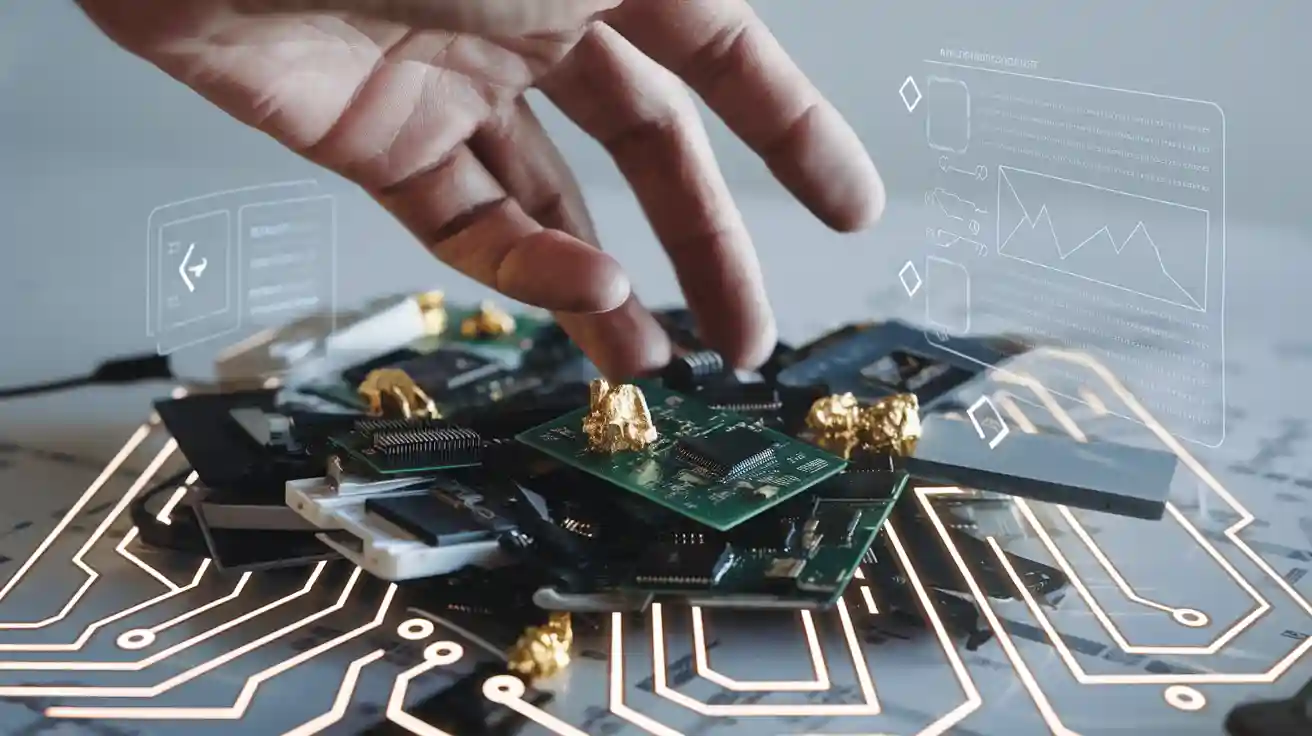
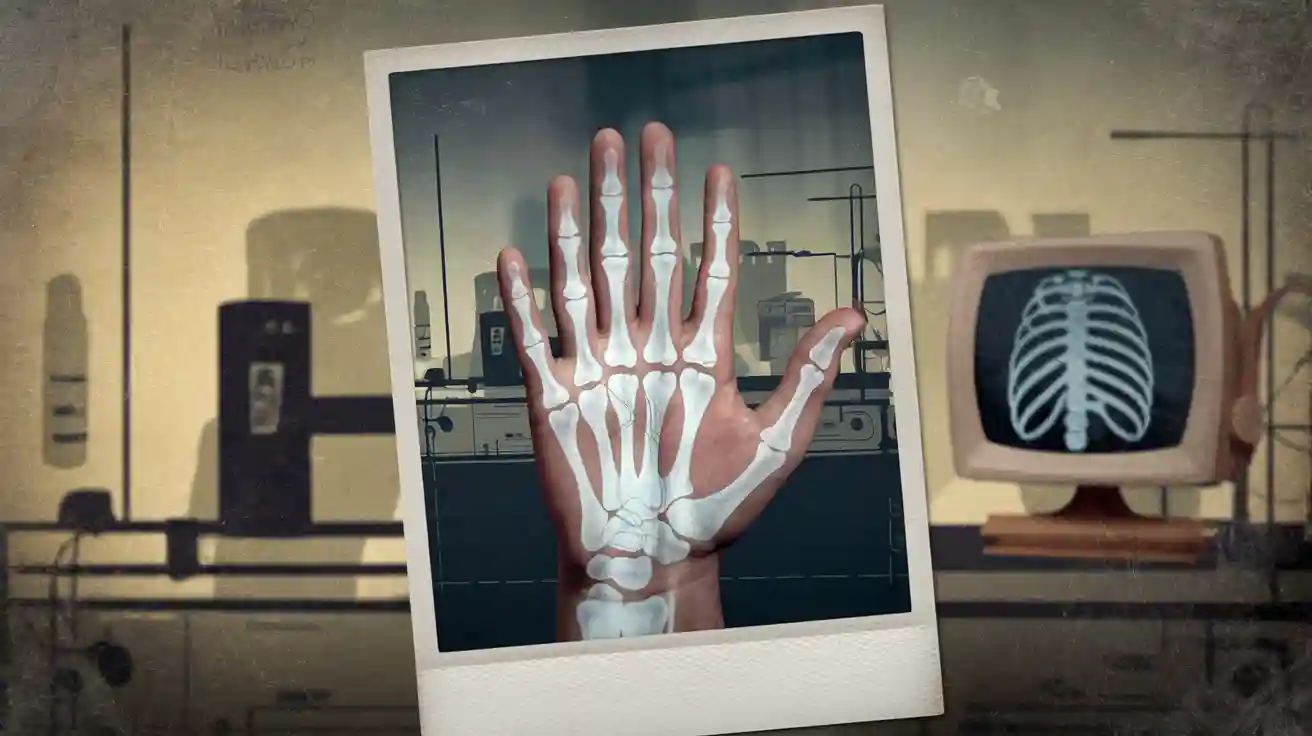

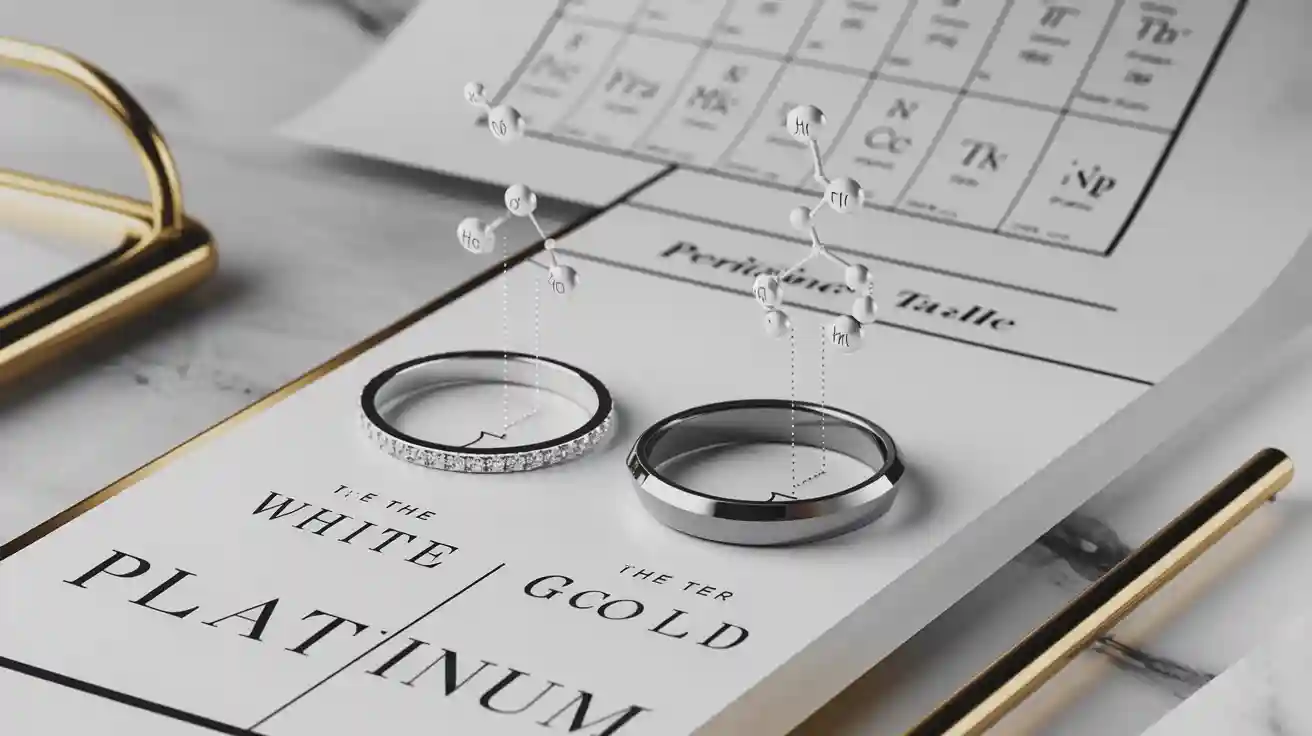
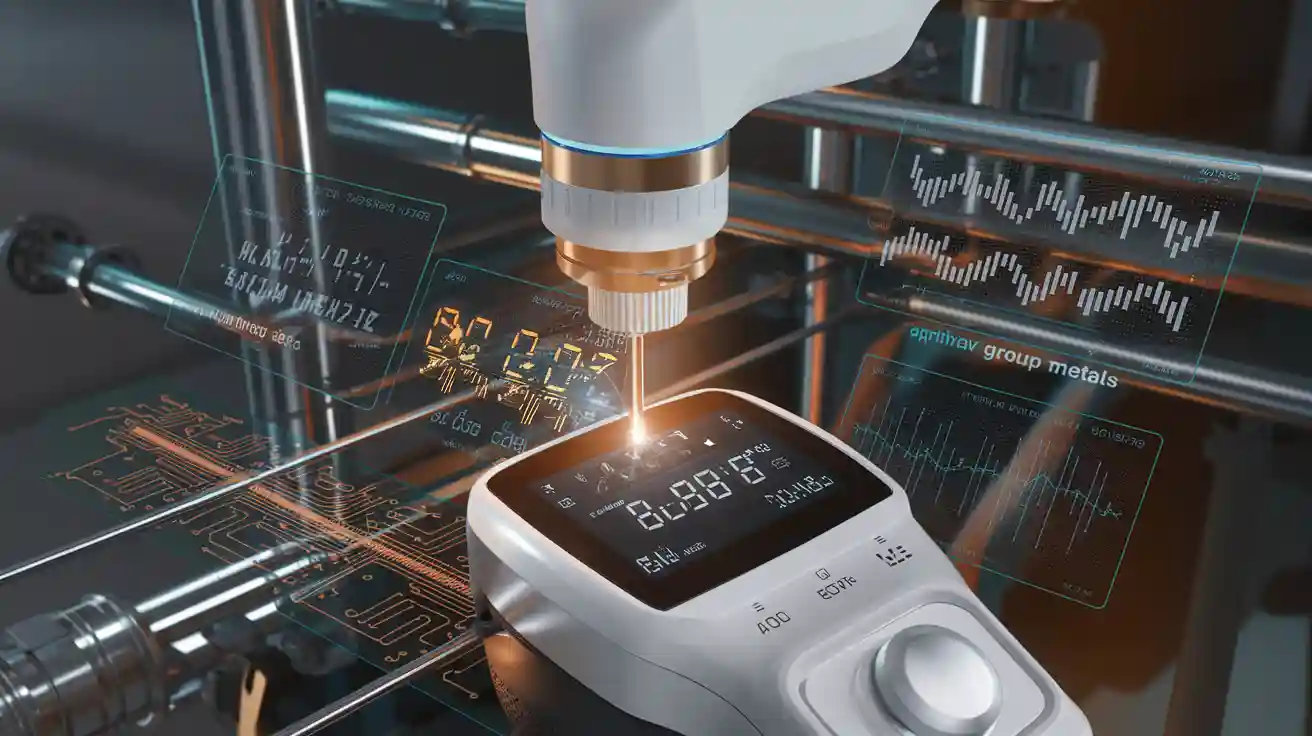
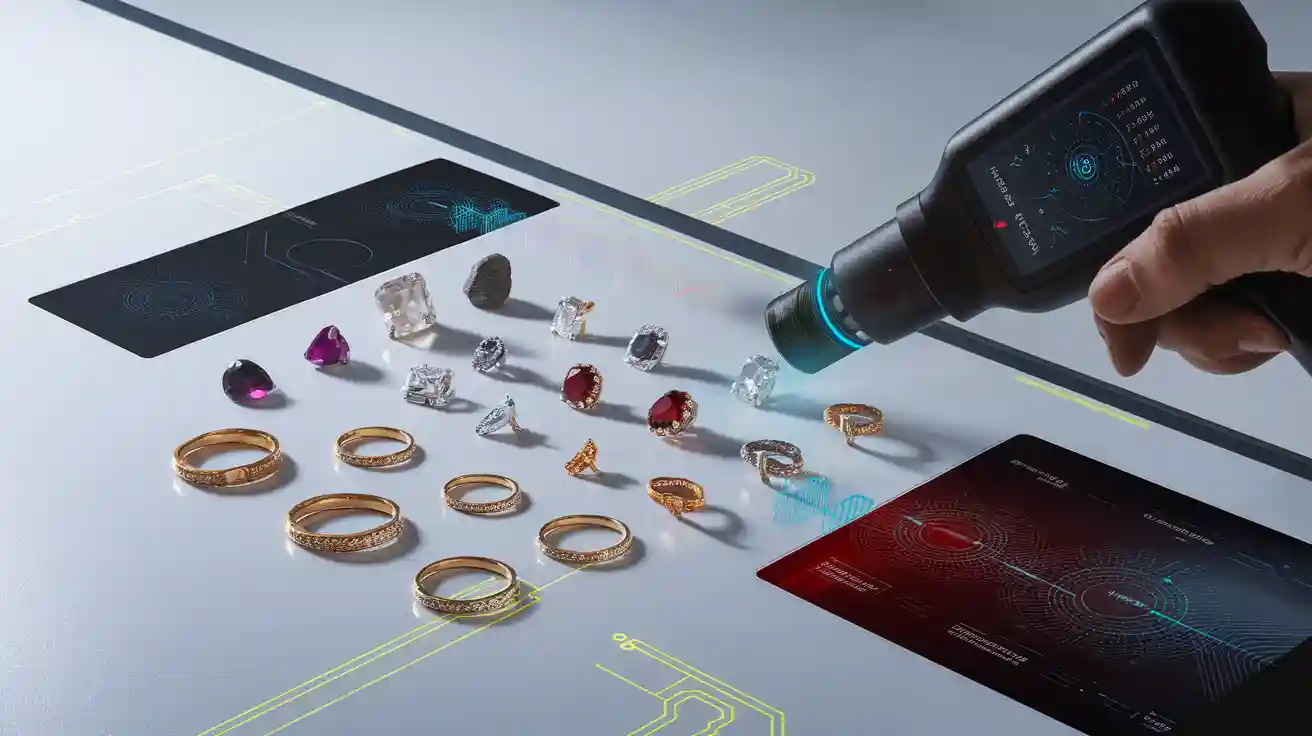

WhatsApp
Escanea el código QR para iniciar un chat de WhatsApp con nosotros.